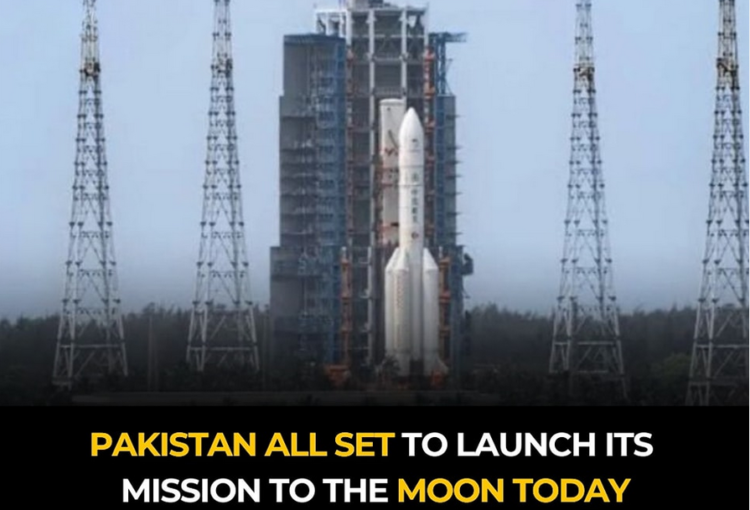In a landmark achievement for Pakistan’s space exploration, the nation has successfully launched its first lunar satellite, ICUBE-Qamar, marking a new era in its scientific endeavors. This mission not only signifies a major milestone for Pakistan but also positions it within an elite group of countries that have embarked on lunar exploration.
Background of the Mission
The journey to this historic launch began with the vision to advance Pakistan’s capabilities in space technology and exploration. The ICUBE-Qamar mission was developed by the Institute of Space Technology (IST) in collaboration with China’s Shanghai University and Pakistan’s national space agency, SUPARCO. The mission’s inception was driven by the desire to enhance scientific understanding, demonstrate technological prowess, and inspire a new generation of scientists and engineers.
Technical Details
The ICUBE-Qamar is a CubeSat, a type of miniaturized satellite for space research that is made up of multiples of 10×10×10 cm cubic units. CubeSats have revolutionized space exploration due to their lower cost and shorter development time compared to traditional satellites. The ICUBE-Qamar carries two optical cameras designed to capture high-resolution images of the lunar surface, aiding in geological and atmospheric research.
China’s Chang’e-6 Lunar Mission
The launch of ICUBE-Qamar was conducted in conjunction with China’s Chang’e-6 mission, a testament to the strong collaborative ties between Pakistan and China in space exploration. Chang’e-6 is part of China’s ambitious lunar exploration program aimed at collecting samples from the far side of the moon for comprehensive analysis back on Earth. The integration of ICUBE-Qamar with Chang’e-6 represents a significant step in international cooperation, showcasing the benefits of shared knowledge and resources in advancing space science.
India’s Moon Missions: A Comparative Perspective
India’s space agency, ISRO, has also been actively pursuing lunar exploration through its Chandrayaan program. The Chandrayaan-2 mission, despite a setback with its lander, has contributed significantly to lunar science, and the successful Chandrayaan-3 mission has solidified India’s position in space exploration. The success of India’s lunar missions has undoubtedly spurred a healthy competition in space exploration within the region, encouraging neighboring countries like Pakistan to accelerate their own space programs.
Importance of the Mission for Pakistan
The ICUBE-Qamar mission holds immense importance for Pakistan. It serves as a beacon of technological innovation, opening doors to new scientific discoveries about the moon and beyond. The mission is expected to provide valuable data that can contribute to various fields, including mineralogy, surface composition analysis, and the study of the lunar atmosphere.
Moreover, the mission symbolizes Pakistan’s growing capabilities and aspirations in space technology. It is a step towards self-reliance in space science and paves the way for future missions that could explore other celestial bodies. The success of ICUBE-Qamar also has the potential to inspire a new generation of Pakistani scientists, engineers, and researchers to pursue careers in STEM fields, fostering a culture of scientific inquiry and innovation.
In conclusion, the ICUBE-Qamar mission is a proud moment for Pakistan and a significant contribution to global space exploration efforts. It exemplifies the power of international collaboration and the boundless potential of human curiosity and ingenuity in the quest to understand our universe. The successful launch of ICUBE-Qamar is a proud moment for Pakistan and a significant step in the nation’s space journey. As the satellite orbits the Moon for the next three to six months, it will not only gather crucial scientific data but also symbolize Pakistan’s aspirations and capabilities in the final frontier. The mission’s success is a beacon of progress, showcasing the potential for international cooperation in advancing our collective knowledge of space and the celestial bodies that inhabit it.




































